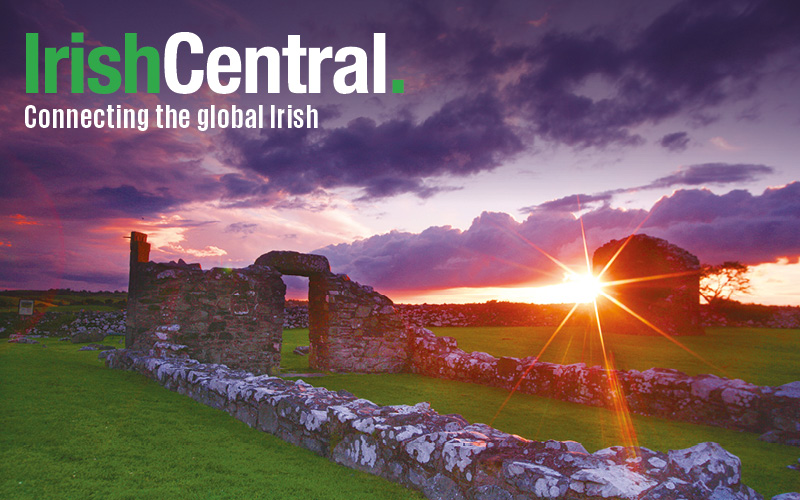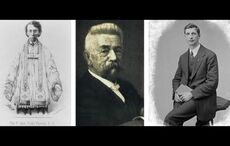One July day in Belfast, a young dancing student came to Anna McCoy after her class and asked her permission to wear his dancing kilt as he marched in the Orange Order parade on July 12. That was about 1950. Decades later, violence in Belfast would shut down the city. It would force the streets into lockdown with residents going to sleep anticipating the sound of explosions at any second and would force Anna to relocate her Irish dancing school from Belfast’s city center to the periphery to stay out of harm’s way. The young boy was a talented dancer, however, he would go on to become an All-Ireland Champion. Why shouldn’t he wear his kilt as a proud Irish dancer? To Anna, dancing was always more important.
Paddy McCoy retells with pleasure this story of his sister, Anna, Belfast’s glamorous cross-community dancing teacher who brought Irish dance all the way to Carnegie Hall long before Michael Flatley, Jean Butler and Riverdance.
Since the world’s Irish dancing community lost one of its finest figures earlier this month, tributes poured in for this innovative teacher who traveled all over the world, bringing creativity and passion for solo dancing and instigating a new period for Irish figure dancing. Anna died peacefully on March 14 in Royal Victoria Hospital, Belfast, aged 89, following a life dedicated to Irish dancing.
Born in 1925, Anna started dancing at a young age and was sent to Jim Johnson’s School of Dancing from the early 1930s. Technically Anna McMurray since her marriage to Albert, with whom she had two sons, Paddy tells IrishCentral that although Albert and she were life-long partners, it was with Anna McCoy’s Dancing School that she came to be known.
“When she was almost 18, she was leaving school just finished the senior cert and she was already doing a line with Al (Albert),” Paddy says. “He convinced her to do the new cert with the Irish Dancing Commission. She was the first to do the examination, just before her 18th birthday, and then she got the hall. For a long time she taught in that hall.”
Anna took center stage and Paddy recalls a funny incident, which Al himself recounted, when he overheard a young girl on seeing Albert pass by, pull her mother by the hand to see “the man who lives with Ms McCoy.”
It was a partnership, however, and in her later years, Paddy say that Anna still liked to speak of their achievements in the U.S. saying “Al had the idea (America), I did all the dancing.”
As Anna established herself as a teacher, she produced great solo dancers but particularly good figure (group) dancers. In 1949, author and lecturer Alan McCauley traveled to Belfast to create "Welcome to Ireland", an edition of his World Travel Log short films. Anna and her dancers were filmed in the Botanic Gardens in Belfast and Alan himself was entranced with the beauty and grace of the dancing.In 1948, the premiere took place in White Plains, New York. The enthusiasm engendered was followed by invitations, and in 1949, Anna and Al embarked on the SS America for a six week exploratory trip, travelling as `The Four Gaels` with the Derry Dance teacher Brendan de Glin and the soprano, Eileen McIntyre, also from Derry.
In the following decade, Anna and her dancers traveled to perform in many parts of the world. At her funeral last week, one of her former students told Paddy of the various places she had visited as one of Anna’s dancers saying, “I was a kid born in Edenmore and when I was four, Anna McCoy took me, taught me to dance and led me to a world I didn’t realise existed.”
As she traveled, Anna’s style and creativity was developing and so was the free interpretation within figure dancing. Anna explored integrating dance with short pageants and dramas, creating a 10-hand reel based around the Five Roads to Tara and even integrating the Book of Kells into her figure dances where dancers formed the rectangular shape of a book and danced as though they were turning the pages through the illustrations. The result was still very much Irish dancing but “a wee bit more imaginative” as Paddy says.
In 1955, in the wake of the success of Anna's figure dancing team at the All–Ireland championships, they were invited to the US, exclusively contracted to appear on "The Arthur Godfrey Show" on Wednesday March 16 and on one of the most famous stages of them all, Carnegie Hall, on St. Patrick`s Day. Arriving a few days before the feast day, they had some time to recuperate before rehearsals for the coast to coast Godfrey Show. The famous 1950s TV entertainer warmly embraced the team and the evening was a resounding success. Paddy himself, fortunate enough to be on this trip, recalls that the group The McGuire Sisters, of `Sincerely` fame were big at this time, also appearing on Godfrey's radio/television show every morning.
Once Anna’s dancers showed America what they were made of, the audience reaction was huge. Paddy remembers “a bank of phones along the side of the studio and they all went mad” as the Irish American community delighted in seeing their performance. The next morning, The Mcguire Sisters were asked to take a seat as Godfrey invited Anna’s dancers back for a second St. Patrick’s Day performance before they raced off to become the first Irish dance group to perform in Carnegie Hall.
The group were the first for many decades to travel to America and ran three consecutive visits though 1955, ‘56 and ‘57, as well as touring through Boston and other U.S. cities with large Irish populations. Paddy says, “over the years, we went everywhere.”
Anna’s group were just as successful in Ireland and the UK. On the BBC show “Come Dancing” (not the version with Bruce Forsyth) the group were invited to compete in an interregional dance competition as regions of the UK and Northern Ireland showcased their local dances. Pitted against other ethnic groups and local dances, Anna’s group once again came out on top.
Her passion for dancing kept Anna teaching right up until 1999, teaching grandchildren of her original students. She was also actively involved in the development of teaching standards being a founding member, and ultimately President, of The Congress of Irish Dance Teachers (An Comhdháil na Muinteoirí le Rincí Gaelacha).
In a tribute made to Anna on their website the Congress said: “As well as being an inspirational teacher, she also held examiner and founder member of An Comhdhail’s examination panel.
“Her legacy as a teacher is renowned worldwide, with the McCoy School of Irish Dancing attaining numerous Ulster and All-Ireland titles in both solo and figure dancing.
“Although Ms McCoy’s legacy lives on through the many past pupils she qualified as teachers and adjudicators, she will be sadly missed within An Comhdháil and the wider Irish dancing community.”
The picture Paddy paints of his sister as he talks to IrishCentral is one of a passionate, gregarious, lively and creative teacher who lived for Irish dancing. He laughs as he describes her as a loquacious, caring figure and remembers with fondness an encounter she reportedly had with another member of the Congress in La Guardia Airport. As enwrapped in their conversation and the good company as they were, they both missed their flight!
He reads a passage out of Frank Whelan's book, “The Complete Guide to Irish Dance” that describes her as an “Irish dance teacher with special pride and commitment” and states that “perhaps Anna McCoy arguably had the greatest group dance team” as that “apart from Riverdance no dance group received so much publicity for Irish dancing”.
Anna was also stylish to the last. Her brother tells how she would carefully choose a length from her mother's store of dress and coat materials and, influenced by the patterns from Woman's Own magazine, her mother`s expertise and experience would do the rest.. "Anna went out dressed to kill," Paddy says, "and people would say that she must be making a fortune in that school when really she was wearing a dress made for a modest sum."
The city of Belfast paid tribute to its famous dance teacher in 2010 as Anna was included in a commissioned piece of art for City Hall Belfast. In an attempt to provide a balance in a City Hall was a predominantly Unionist environment for so many years, they introduced an Irish element by commemorating five iconic figures in Northern Irish cultural heritage: Edward Bunting, musician and the figure that notated the music of the blind harpers at the 1792 Harp Festival; John McKay, a journalist with the Irish News and the Cork Examiner, and one of the seven founding members of the Gaelic Athletic Association; Alice Milligan, poet, playwright and member of the Gaelic League; Sean Maguire, fiddle player and teacher; and Anna, who was then the only living person to be commemorated.
Anna is survived by her two sons and several grandchildren.
Ar dheis Dé go raibh a hanam dílis.
*Originally published in March 2015




Comments